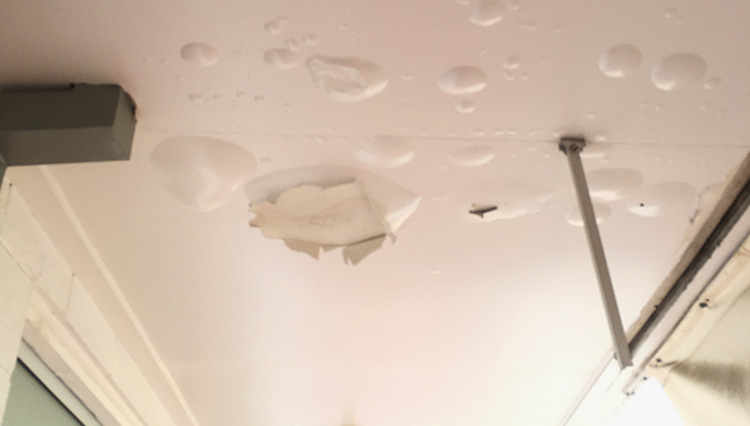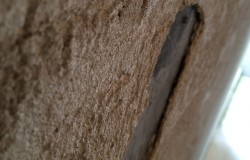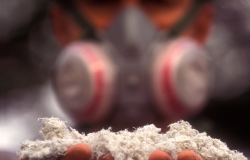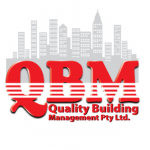Bubbling paint on asbestos cement sheeting
Does your unit complex have asbestos cement sheeting?
Is the paint peeling or bubbling?
What do you do?
Firstly, do not get any old painter in to repaint the ceiling and make it look good. The chances are they will start sanding the paint or water blast the area.
Do Not in any circumstance allow a painter or any other person to sand or water blast the peeling or buddling paint.
Does the strata complex have asbestos cement sheeting?
The use of asbestos in any form was banned in Australia from 31 December 2003. However the majority of building products used in strata complexes was phased out during the 1980’s. But unfortunately due to Australia’s insistence on importing everything from overseas, it has now been found that Australia imported sheeting containing asbestos up to 2003, and surprisingly, it has just been identified that imports from China, even in 2015, contain asbestos.
Therefore, you cannot assume that your complex does not have asbestos just by looking at the construction date.
If the complex has any commercial uses then under the Work Health and Safety Act, the complex MUST have an inspection completed by a competent person to identify all asbestos on site.
If the complex is purely residential, it still at times becomes a workplace and as such an asbestos audit should be undertaken to identify all asbestos on site.
How to identify asbestos?
Asbestos was used in thousands of building products and not just sheeting.
A competent asbestos assessor has the expertise to identify products and materials that may contain asbestos. However, you cannot see asbestos. The asbestos fibres are too small to see with the naked eye.
Due to this, you can hold a piece of sheeting manufactured in 1975 and a piece manufactured in 2016 and not see any difference, especially if both are painted and you can only see the face of the sheeting as is the case in any building.
There are 2 methods of identifying asbestos within a complex.
- Assume that everything contains asbestos.
- Take samples to prove if products actually do contain asbestos.
Assuming asbestos
This means that everything must be assumed as containing asbestos, even though it may not contain asbestos.
If you are using this method, you are wasting your money by not using a professional asbestos auditor. You may as well get any person, child or adult, off the street to tell you that they don’t know what is or what is not asbestos and therefore everything must be assumed to contain asbestos.
You not only waste money on the audit, but you now have major expenditure above the standard cost of all works to be carried out on site, as the trades persons must treat everything as containing asbestos. On top of this additional cost that could add many thousands of dollars to the smallest job, the complex will then need to have regular re-audits.
Taking samples
A professional company will safely take samples of all suspect materials and prove that materials do or do not contain asbestos. Samples are taken in a safe manner in accordance with the methods as stated in the legislation.
The results will then be used to produce an accurate register of all asbestos on site. The complex will then only pay the additional job costs where asbestos is actually present.
Plus, re-audits may not be required as the complex may actually be asbestos free. This has been the case in many hundreds of audits that I have personally completed.
By spending $50 for a sample, you could save many thousands of dollars.
Please note also that an “asbestos gun” that is purported to identify asbestos by pointing a machine against a wall, is not a legal method to identify asbestos . Such machines do not meet the requirements of the Work Health and Safety Act.
Preparing surfaces prior to painting
The first thing to understand is that asbestos kills people and pets. The dangers are most prevalent when there is dust present and you breathe in that dust.
Therefore, any surface preparation prior to painting must not result in any dust being generated.
As such, you must not expect to have a perfectly finished surface after painting. There may well be bumps and uneven surfaces from the old paint, as the painters must not dry sand any asbestos materials.
Tips
- Before you engage the painters, have a plumber inspect the roof for any leaks. Bubbling of paint is a sure sign that there may well be water ingress.
- Only engage a professional painting company who have experience in asbestos to undertake the works.
- Ensure the contractor has the licenses and insurances to undertake the works.
- Ensure the contactor prepares a “Safe Work Method Statement” (SWMS) for the work. This will identify the safe methods they plan to implement to undertake the works.
- Ensure the contractor supplies a copy of the SWMS prior to the commencement of works.
- The SWMS should include:
- How they will prepare the peeling or bubbling paint without generating any dust
- The areas under the surfaces to be painted are protected by 200um black plastic
- The material to seal the asbestos sheeting and bond the new paint
- The quality of the new paint. (Only use acrylic paint and not oil based paint on asbestos materials)
- How to deal with asbestos breakages or other contamination
- The methods of disposing of the contaminated black plastic and other waste.
For a heart wretching story on the deadly effects of asbestos, click the link to see the story of the Saga family who lost their son, Adam at only 26, after being exposed to asbestos at the age of 18 months.
Contact QBM directly for any further detailed instructions or procedures.






